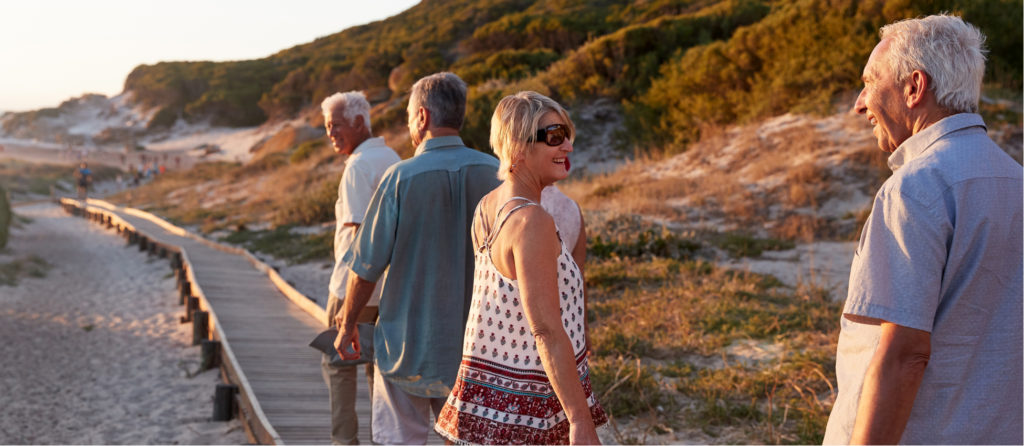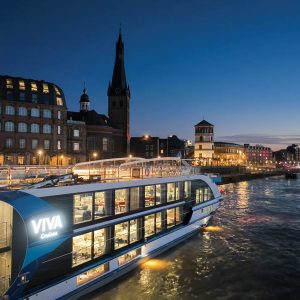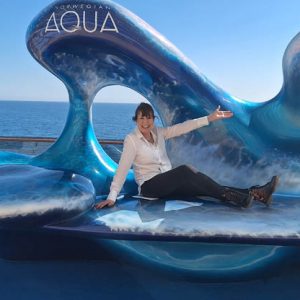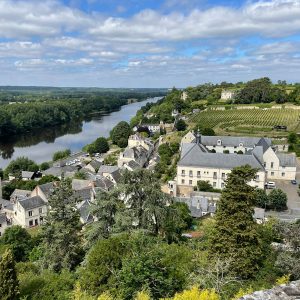City wonders and cafe life
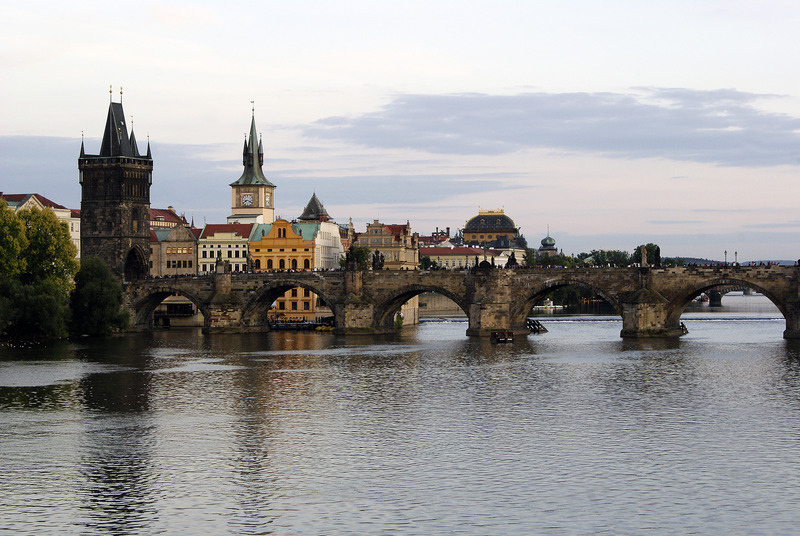 10.30am, the next day, we were standing on Gothic Charles Bridge. 14th century and famous around the world. It connects the Old Town to The Little Quarter which leads up the hill to the castle. The bridge is over 500m long, has 16 arches and is unusual in the fact it is slightly curved. Thirty statues line the bridge. All your favourite saints are here – almost an A – Z. St Wenceslas has to be here as is St John the Baptist, St Christopher, St Francis of Assisi, St Barbara, St Ann and St Cyril.
10.30am, the next day, we were standing on Gothic Charles Bridge. 14th century and famous around the world. It connects the Old Town to The Little Quarter which leads up the hill to the castle. The bridge is over 500m long, has 16 arches and is unusual in the fact it is slightly curved. Thirty statues line the bridge. All your favourite saints are here – almost an A – Z. St Wenceslas has to be here as is St John the Baptist, St Christopher, St Francis of Assisi, St Barbara, St Ann and St Cyril.
The feel is totally cosmopolitan. The area has an almost festival atmosphere at any time of day or year. Street performers are all around. A rather anorexic Winnie the Pooh pranced up and down, miles away from the Hundred Acre Wood. The kids loved him. Artists selling prints and watercolours, sketching 5-minute caricatures, photographers selling atmospheric photos especially black and white, jewellery. It’s all on offer here.
There are always tourists milling around. The bridge and river acts as a magnet. Once again throngs of Japanese and Chinese see this amazing capital through their camera lens rather than experiencing the staggering beauty Prague has to offer in 360 degree 3D.
Too many selfie sticks too. The couple in front were almost decapitated by a Far Eastern tourist swinging one around trying to get a decent shot. I do think that people who use selfie sticks need to have a good long look at themselves!
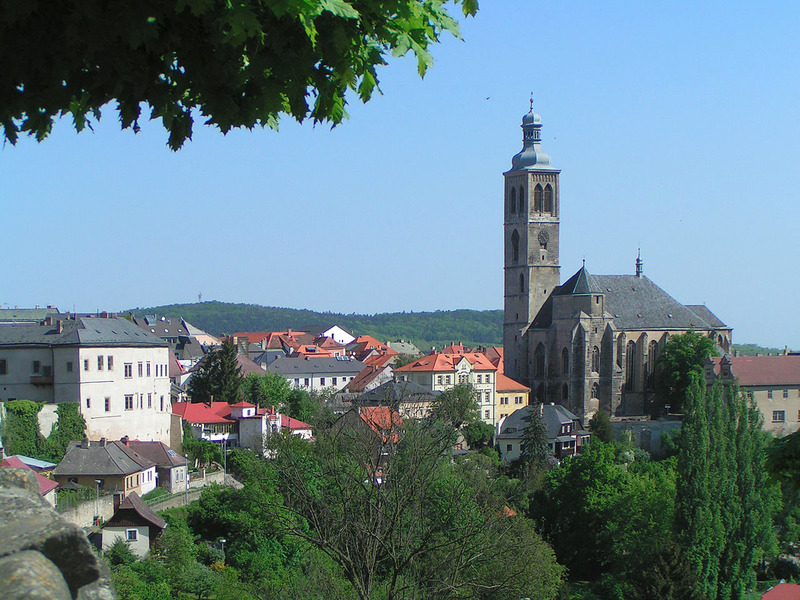 Kutna Hora was the optional tour today offered by Paul and Gabor. It’s been on the UNESCO world culture heritage list since 1995 because it was the medieval centre of silver mining, which resulted in it becoming the second richest town in Bohemia, once rivalling Prague in importance. St Barbara’s cathedral, another Gothic masterpiece, was appreciated by our group. St Babs is patron saint of miners. The unique Ossuary or bone house is decorated with over 40,000 bones and is fascinating.
Kutna Hora was the optional tour today offered by Paul and Gabor. It’s been on the UNESCO world culture heritage list since 1995 because it was the medieval centre of silver mining, which resulted in it becoming the second richest town in Bohemia, once rivalling Prague in importance. St Barbara’s cathedral, another Gothic masterpiece, was appreciated by our group. St Babs is patron saint of miners. The unique Ossuary or bone house is decorated with over 40,000 bones and is fascinating.
To escape the crowds on Charles Bridge (Karluv most), and it is easy to do, so we took a stroll through Kampa Park, past the watermill and sat down. People watching is positively de rigeur. The statue of a seated girl here was created in 1965 by John Hany. The ‘Babies’ by David Cerny are rather ugly yet thought-provoking.
Cafe Savoy dates back to 1893. It has an ornate and gorgeous Neo-Renaissance ceiling, crystal chandeliers and spotlessly manicured polite staff. Don’t forget to look up! To preserve the ceiling during the war and subsequent socialist years, the wise owner made the correct decision to cover it up. No one using the cafe had the slightest knowledge of the gem hidden a few feet above their heads. A great lunch is on offer too. The fried chicken schnitzel and potato salad was lovely. Oh, did I mention the cakes or the coffee that followed?
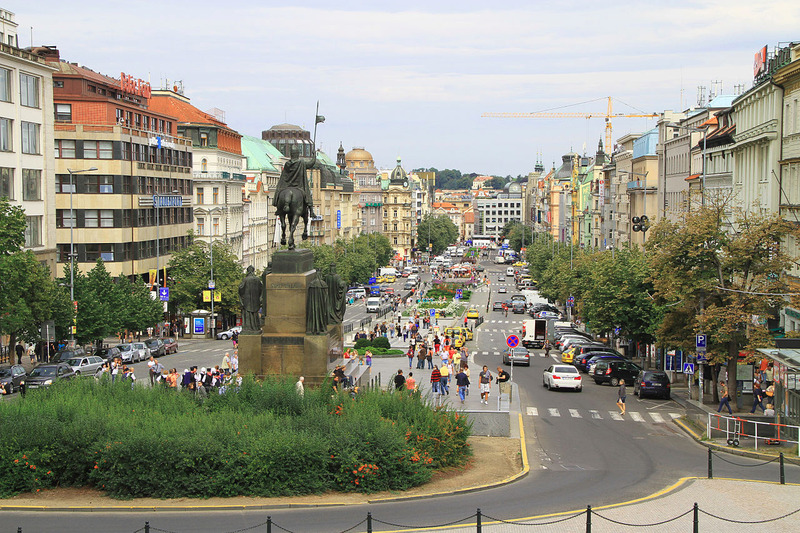 Soothed by the ever present sun and full from lunch, we decided to head towards Wenceslas Square named after the good king of Christmas carol fame. Through the trees we could see the impressive Tancici Dum, the Dancing House, affectionately named the Fred and Ginger building. Designed by Frank Gehry, this popular attraction ‘danced’ onto the riverbank in 1997. From a distance the twin towers look like two ballroom dancers leaning into a clinch. It’s a frantic, chaotic building, which is a symbol of post-communist Prague, a building for the city. The guide book says it’s an icon of de-constructivist buildings and I, for one, am not going to argue.
Soothed by the ever present sun and full from lunch, we decided to head towards Wenceslas Square named after the good king of Christmas carol fame. Through the trees we could see the impressive Tancici Dum, the Dancing House, affectionately named the Fred and Ginger building. Designed by Frank Gehry, this popular attraction ‘danced’ onto the riverbank in 1997. From a distance the twin towers look like two ballroom dancers leaning into a clinch. It’s a frantic, chaotic building, which is a symbol of post-communist Prague, a building for the city. The guide book says it’s an icon of de-constructivist buildings and I, for one, am not going to argue.
Next stop Cafe Slavia, near The National Theatre, serving excellent coffee again. And cake too. We are adopting the ‘when in Rome’ approach.
Wenceslas Square is not square, more long and thin and tree-lined, rather like a wide boulevard. In the so-called Velvet Revolution, a peaceful people rose up against the brutal communist rule. The drawing back of the Iron Curtain began here with Vaclav Havel being elected president in 1989. Prague became capital of the now independent Czech Republic in 1993. A crowd stood below the balcony from where he addressed the good people of this city. The giant statue of St Wenceslas on horseback is impressive.
With the sun still shining, burning my neck in fact, we headed back to the hotel. A final look at iconic Old Town Square, which was once was a place of execution. It’s now a focal point for locals, tourists and street theatre. (One of my school colleagues left school to join a touring circus. The word on the street is that he eventually moved to Bohemia to become a mime artist. We haven’t heard a word from him since.)
A final meal of goulash, dumplings followed by strudel and cream then back to The President to pack. Did I mention the delicious coffee and cake?
Prague will capture your heart. And in this medieval romantic paradise, life’s troubles seem a long, long world away.
Tomorrow Austria and the wonderful Vienna and another tick on our bucket list.
See also
- Trafalgar Tours – Prague, Vienna and Budapest: Chapter 1 – preparing to travel
- Trafalgar Tours – Prague, Vienna and Budapest: Chapter 2 – a stunning city and new friends
- Trafalgar Tours – Prague, Vienna and Budapest: Chapter 3 – a guided walk and music by candlelight
- Trafalgar Tours – Prague, Vienna and Budapest: Chapter 5 – Vienna bound
- Trafalgar Tours – Prague, Vienna and Budapest: Chapter 6 – a Viennese whirl
- Trafalgar Tours – Prague, Vienna and Budapest: Chapter 7 – having a ball
- Trafalgar Tours – Prague, Vienna and Budapest: Chapter 8 – Budapest bound
- Trafalgar Tours – Prague, Vienna and Budapest: Chapter 9 – Big bustling Budapest
- Trafalgar Tours – Prague, Vienna and Budapest: Chapter 10 – Goodbye Budapest
